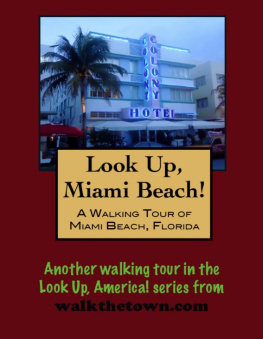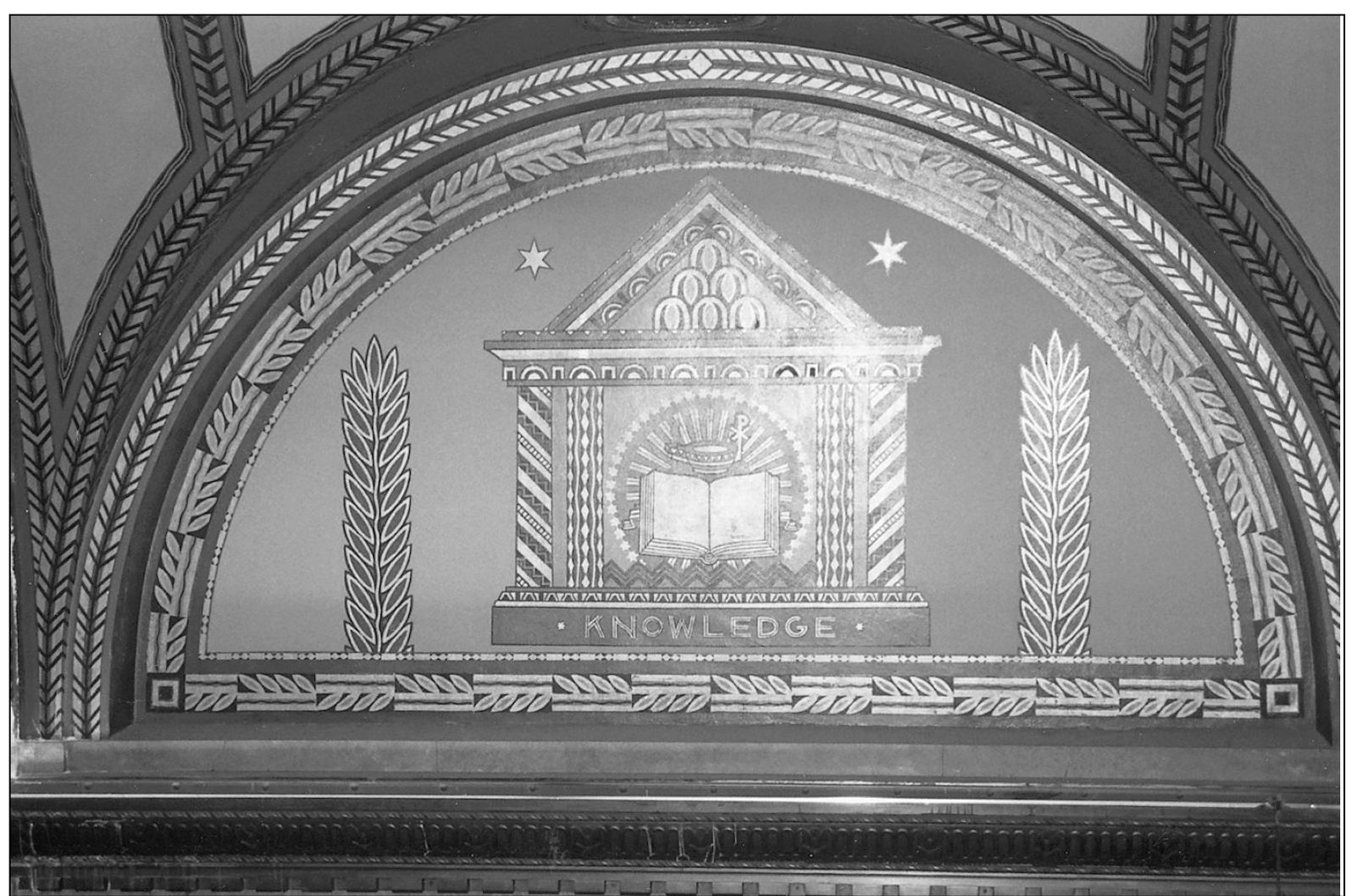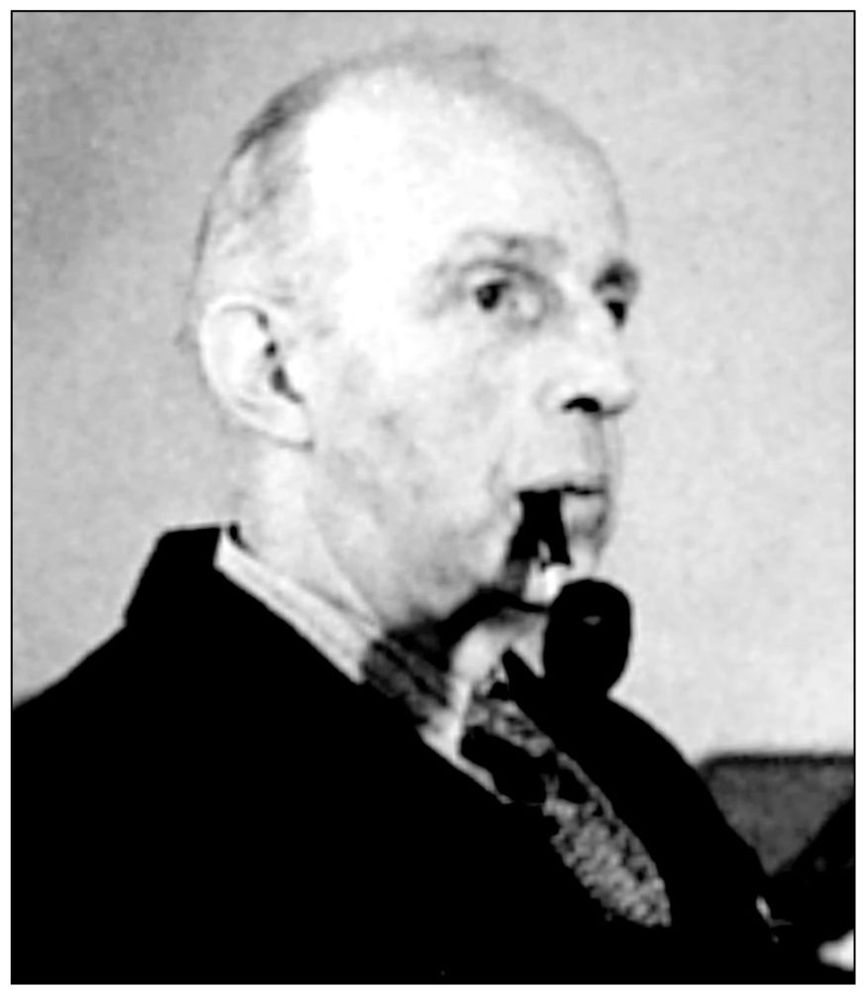One
EXCEPTIONAL EXAMPLES
The Fisher Building is replete with elaborate stenciled artwork on the three-story arcade walls and ceilings. This image of knowledge and reading was meant to inspire visitors and workers on the buildings third floor.
The Fisher Building is a masterpiece of architecture in Detroit. Designed in 1928, it is 28 stories tall, with two 11-story wings extending along Grand Boulevard and Second Avenue. Meant to be a city within a city, it was a place where one could park his or her car, drop the children off at the nursery, conduct business, bank, shop, dine, and see a movie. Built by the seven industrialist Fisher brothers as a home for their automotive company, they gave the architect an unlimited budget. That meant no expense was spared in using the best materials available and an army of itinerant European artisans to create a stunning skyscraper. (Courtesy Burton Historical Collection.)
Albert Kahn (18621942) was the architect of the Fisher Building, and he was the most prominent industrial architect of the 20th century. Kahn was born in Germany, the eldest son of a rabbi, and worked his way up through one of Detroits early architectural firms. His own firm initially specialized in reinforced concrete automotive factories and became internationally acclaimed. The Albert Kahn offices later output hospitals, government buildings, university libraries, mansions, and skyscrapers. Among Kahns most notable structures are the General Motors Building, the Ford Motor Company Model T Plant, and the Belle Isle Conservatory. Detroit would not have been the same without him. (Courtesy AIA Detroit.)
The Fisher Buildings first three floors are clad in Minnesota granite and the upper stories in Maryland marblethis photo taken over the main entrance depicts both. The entrance piers are ornamented with stylized eagles on an industrialized perch. Kahn designed strong vertical piers on the towers exterior to give it the illusion of greater height.
The Golden Tower of the Fisher Building brightens the skyline of Detroit. The sloped roof was originally covered with gold-leafed tile, but now green tile tops the structure. WJR radio station has been housed in the tower for decades. For the year 1929, the building was honored by the Architectural League of New York as the most beautiful commercial structure in the United States. (Courtesy Burton Historical Collection.)
Geza Maroti, a Hungarian-born artist, designed the elaborate frescoes, lunettes, plaques, and mosaics of the Fisher Buildings interior. The ceiling stencil work shown here is a representation of oranges in an angular Art Deco pattern.
This vintage postcard depicts the Union Guardian Trust Buildingone of the most exuberant Art Deco skyscrapers built in America. It was designed in 1929 as a flagship headquarters for the Union Trust Company. Now known as the Guardian Building, it is 36 stories tall and a National Historic Landmark. The Guardian Building stands on an entire block of Griswold in the financial district downtown. The taller north tower and the smaller octagonal south tower are connected with a nave-like block resembling a cathedral. In fact, the Guardian Building was once promoted the Cathedral of Finance. As shown in this postcard, the tower once had high-powered beams of light streaming in all directions.
Architect Wirt C. Rowland (18781946) designed the Guardian Building while he was working for the firm Smith, Hinchman & Grylls. Rowland was born in Clinton, Michigan, and moved to Detroit to pursue his architectural career. He studied at Harvard, went to work in numerous Detroit architectural firms, and truly redefined Detroits skyline. The Buhl Building, Penobscot Building, and Guardian Building are all from Wirt Rowlands drawing table.
These plans of the Guardian Building show the basement level, the first and second floor lobby and banking hall, and the 32nd floor dining room where every item of furniture and tableware was designed by Wirt Rowland.
The Union Trust Companys grand opening invitation featured a typeface that itself was appropriately Art Deco. Just one year later, the Union Trust Company was one of the many banks to fail in the Great Depression of the 1930s. (Courtesy Burton Historical Collection.)
The main entrance to the Guardian Building is flanked by reliefs of Safety and Security by Detroit sculptor Carrardo Parducci. The semi-circular domes tiles were executed by Mary C. Perry Stratton of Pewabic Pottery. She worked closely with the architect, Wirt Rowland, on the design and symbolism of the tiles. Rowland created a new skyscraper style by combining Art Deco angles and Mayan/Aztec details. The exterior of the Guardian Building is faced with granite on the first two stories, and custom-colored orange brick, glazed tile, and terra cotta above. Rowland developed a specific brick color, which was later marketed as Guardian Brick.


























